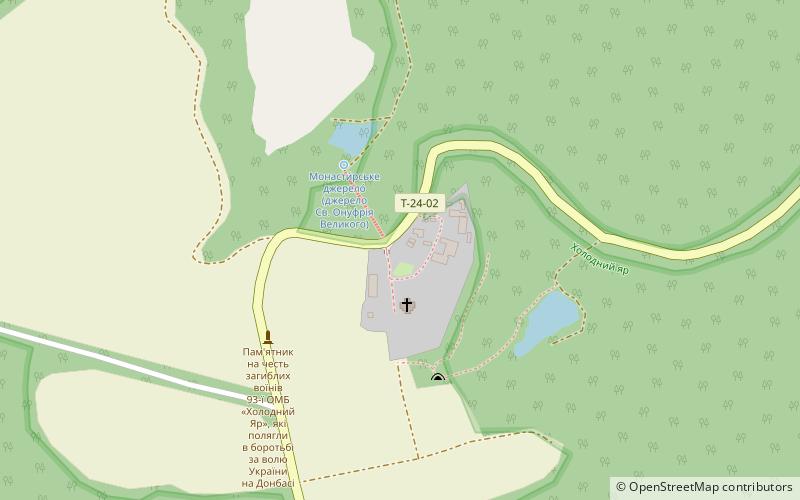Motroninskij monastir


Facts and practical information
Motronin monastery of the Holy Trinity, Motroniński, Motreniński - Orthodox female monastery in the Cherkas Eparchy of the Ukrainian Orthodox Church of the Moscow Patriarchate, in the village of Melnyky.
The moment of the monastery is not known. There is a message that the first church was created in his place after the baptism of Rus. According to another version, the founder of the monastery was the wife of one of the voivods of Jarosław the Mądre named Motron. The first written information about the existence of a monastery comes from 1198 and concerns the construction of the church of St. John the Baptist. The monastery was destroyed during the Mongol invasion and deserted for a long time. The monks who again began monastic life in it did not have a free -standing church, but lived in cavernous.
In 1568, another group of monks began to renew destroyed monastery facilities. The monastery was under the care of the Cossacks. Due to its age and a significant number of monks, it was one of the most important centers of Orthodox worship in the Czerkas region. The facility was surrounded by an earth embankment with a frequency and entrance gate. The main monastery temple was made of wood, covered with five domes. Residential facilities for religious were also erected from wood.
In the second half of the 17th century, the monastery was destroyed several times as a result of Turkish invasions. In 1678, one of them was completely burned. However, in 1685, with the help of the metropolitan of Kiev Gedeon, he was reactivated. In 1727 a new brick church of the Holy Trinity was erected.
From 1753, the monastery was Melchizedek, an organizer of missionary activity among the right-bank units living in Ukraine, an active conflict participant between the Orthodox and Uniate hierarchy in the Polish-Lithuanian Commonwealth, going to Russia several times in order to obtain the support of Catherine II for the Orthodox state in the Polish-Lithuanian state, A close associate of the Belarusian bishop Jerzy. In this year there were about twenty monks in the monastery, who enjoyed a significant moral authority in the local community. At the same time, the activities of Ihumena Melchizedek meant that from 1767 the Motroniński Monastery became one of the places where in the period preceding Koliszczyz a local population was attracted to the local population wanting to stand out against units. Melchizedka replacing Mnich Gabriel, under the pressure of the local administration, after some time forbade the admission of the peasants.
In April 1768, the monastery was robbed by unknown perpetrators. On May 22, the monastery was attacked again by several hundred strikers "in Polish clothing". Four days later, a branch of Bar Confederates located in nearby Żabotyń. Under the influence of the rumors that they intend to attack the monastery and in the face of an earlier unsuccessful attempt to obtain the assistance of the Governor of Żabotia, the monks abandoned the monastery buildings.
In the areas belonging to the monastery, in a cool yar, the first branch of Maksym Żeleźniak was formed, which then began Koliszczyz. The end of the 17th and 18th centuries was a period of decline in the importance of the monastery. In 1800 a new church was erected on its area, which after two years, due to errors in the project, collapsed. In 1805 she was replaced with another temple.
In 1845 a shoemaker's terrace stayed in the monastery, which made him the subject of one of his watercolors. According to the data from 1847, the Motroninian monastery community had 45 monks and obedience.
In 1911, the authorities of the Russian Orthodox Church decided to transform the Motroniński monastery from male into female. During the civil war in Russia in the monastery and the cool Jar located in its vicinity, the Ukrainian refuel was operated for three years. In 1923 the monastery was closed and its assets were nationalized. In 1929, the Church of the Holy Trinity was closed as a monument of republican significance.
In 1968, in connection with the two -hundred anniversary of Koliszczyzna, a draft renovation of the destroyed monastery and the equipment of the museum dedicated to this event was created. However, renovation works were not completed. The Orthodox church regained the monastery in 1991.
Cherkasy
Motroninskij monastir – popular in the area (distance from the attraction)
Nearby attractions include: Maksym Zaliznyak oak tree.

